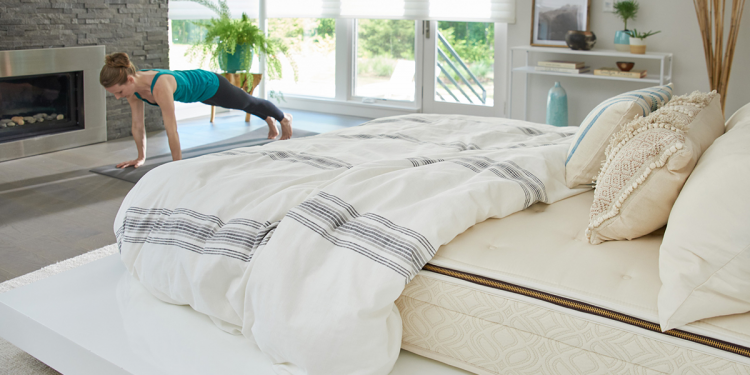OVERVIEW
Layla offers two mattresses: the layla memory foam mattress and the layla hybrid mattress. The layla memory foam mattress, which is the focus of this review, is their flagship mattress.
The layla memory foam mattress contains memory foam and polyfoam in both its comfort layers and support core. Like the layla hybrid mattress, it is flippable. Sleepers can enjoy medium soft (4) or firm (7-8) firmness settings in one bed with both of layla’s mattress offerings.
At 10.5 inches thick, the layla memory foam mattress has an average profile. Standard sheets will fit just fine, unlike with the 13-inch layla hybrid, which could require deep-pocket sheets.
The two mattresses are distinguished by slightly different feels and very different price-points. The layla memory foam mattress is highly contouring, while the hybrid feels more responsive. The memory foam mattress is a better choice for sleepers who like to feel “hugged” by their mattress.
Due to differences in construction, the layla memory foam mattress is more affordable than the hybrid.
Keep reading to learn more about the layla memory foam mattress, and to find out if it’s the right bed for you.
The layla memory foam mattress comes with two firmness options. The side they call “soft” measures medium soft, or 4 out of 10 on the firmness scale. The “firm” side measures 7 to 8 on the firmness scale.
Ideal for:
- Side sleepers under 130 pounds. Sleepers in this category felt supported and enjoyed spinal alignment on the medium soft side of this mattress.
- Stomach sleepers over 130 pounds. These sleepers found the support they need on the firm side of this bed.
- Hot sleepers. Copper infused into the upper-most comfort layer promotes cooling.
- Sleepers who prefer a conforming mattress. This bed gives the signature “hugging” sensation of memory foam.
Considerations:
- Edge support on the medium soft side of the bed is mediocre, which might limit the usable surface area.
- The highly conforming nature of this bed might inhibit movement, which can be detrimental during sex.
Mattress Performance
Plush memory foam layers make this bed good at isolating motion. Most sleepers won’t be bothered by their partner’s movements throughout the night. Memory foam is known for absorbing rather than transferring motion. Most all-foam beds isolate motion fairly well.
The “soft” side of the bed is somewhat better at isolating motion than the “firm” side. This is because the “soft” side has a thicker (3-inch) uppermost memory foam layer than the memory foam layer (1-inch) on the “firm” side. Very little motion will transfer on the “soft” side of the bed.
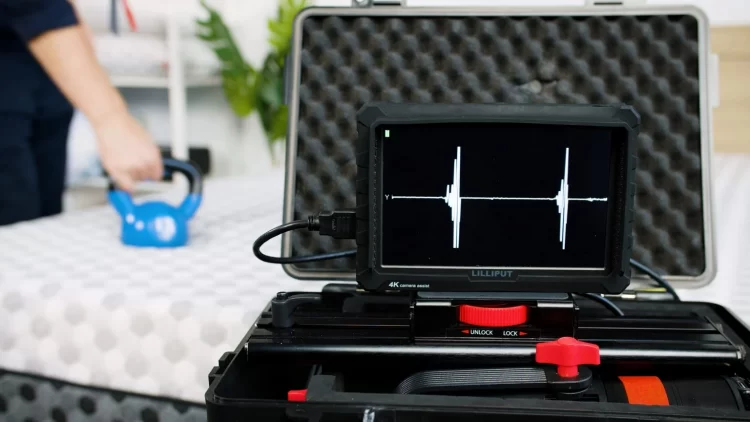
Pressure Relief
This mattress relieves pressure well due to its construction and the addition of copper in the memory foam layers. Copper helps memory foam provide more support in areas of more pressure. Most sleepers won’t develop pressure points while lying on this bed. The neck, shoulders, hips, and lower back will feel supported and cushioned in most sleepers.
Three inches of memory foam atop a 2-inch zoned transition layer make the “soft” side of the bed even more pressure relieving. Memory foam “hugs” the body, while the transition layer keeps heavier body parts from sinking down too far, which can lead to discomfort. When the mattress is flipped to the “firm” side, these layers have less of an effect on pressure relief because they are acting as the support core.
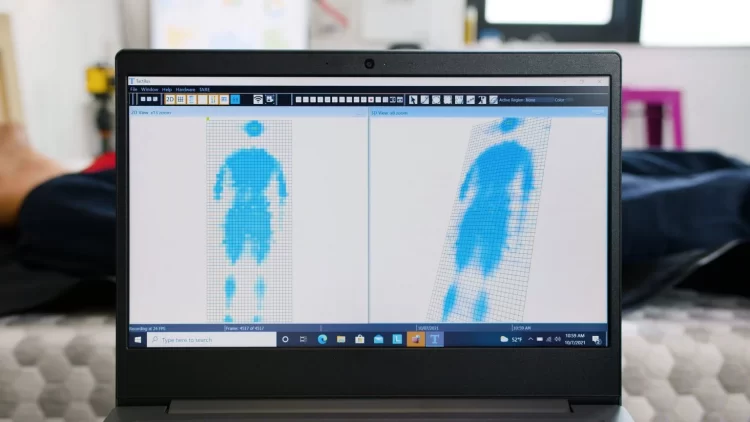
Temperature Control
This mattress is superior to most all-foam beds when it comes to temperature neutrality. A copper infusion in both memory foam layers helps keep sleepers cool throughout the night. Most sleepers will not have to worry about waking up in a sweat on this mattress.
The “firm” side of the bed tends to remain more temperature neutral because it contains less memory foam. Memory foam is known for trapping body heat. Although gel copper infusions counteract this tendency to a degree, the side with less memory foam is naturally a bit cooler.
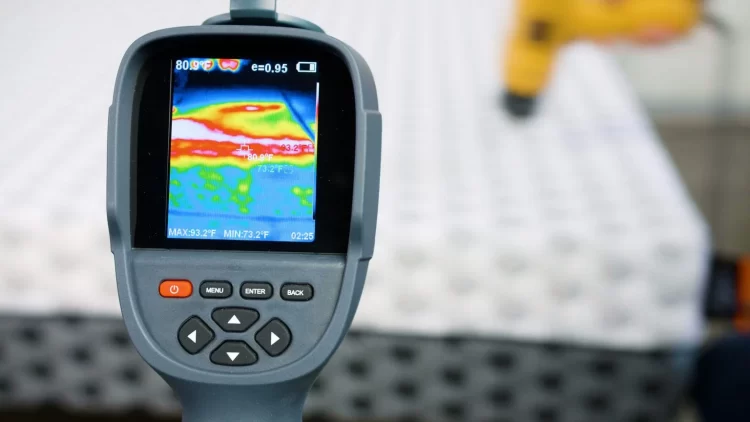
Edge Support
This mattress has average edge support for an all-foam bed. Generally, hybrid and innerspring mattresses boast stronger edges than foam beds do.
Strong edge support allows for full use of a mattress’s surface. When edges are weak, sleepers might feel at risk of rolling off the bed when sitting or lying near the edge.
The “firm” side of this mattress has stronger edge support than the “soft” side. When this mattress is flipped to the “firm” side, the second layer is four inches of high-density polyfoam. This layer strengthens the edges of the bed
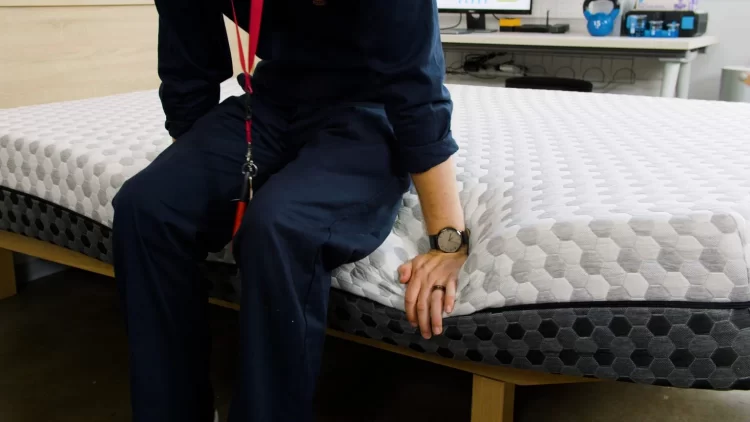
Ease of Movement
Sometimes highly confirming mattresses inhibit movement. Memory foam becomes transformed by body heat and molds to the body. Movement can feel difficult as it takes a few seconds for body impressions in the memory foam to bounce back.
Movement is fairly easy on this mattress, though not as easy as it would be on a more responsive bed. Sleepers using the soft side in particular might feel that the “hug” of the memory foam creates initial difficulty when they try to move out of a position they’ve settled into. Movement is easier on the “firm” side of the bed since that side contains less memory foam.
Sex
Sex can be slightly more difficult on a highly conforming mattress when compared to a more responsive bed. Mattresses that contour to the body can inhibit movement, have softer edges, and retain heat more easily.
The “firm” side of the mattress rates higher for sex than the “soft” side. The “firm” side has less memory foam in its comfort layers and feels more responsive. As a result, this side of the bed is less likely to inhibit movement. Also, the edges are stronger on the “firm” side, which makes slipping off the edge of the bed less likely.
Off-Gassing
This mattress off-gasses an average amount for an all-foam bed. When a mattress off-gasses, it releases volatile organic compounds (vocs) that often come with a chemical smell. While the smell is noticeable the first day or two after unboxing the mattress, it fades fairly quickly.
Most people aren’t bothered by the smell of off-gassing. People who are particularly sensitive to smells might want to avoid the mattress the first day it is unboxed. Foam mattresses tend to off-gas more than hybrid and innerspring mattresses, because polyfoam and memory foam off-gas more than steel.
Sleeping Style and Body Weight
Side sleepers: of all sleep preference groups, side sleepers preferred the “soft” side of this mattress the most. The bed promotes spinal alignment in side sleepers and relieves pressure. Hips and shoulders are cushioned and sink into the memory foam layer while remaining supported by the zoned transition layer, which also supports the abdomen.
Side sleepers weighing under 130 pounds especially enjoyed this bed, rating it excellent. The “soft” side of the mattress provides lighter side sleepers the precise mix of support and cushion they need. That said, side sleepers weighing over 130 pounds also felt supported by the bed. The layla is particularly good at supporting side sleepers.
Back sleepers: back sleepers weighing under 130 pounds will find adequate support in the layla. The medium soft firmness level provides enough lumbar support to keep the lower back from arching and sinking in too deeply, which can lead to discomfort. The zoned transitional layer helps provide support in the right places.
Back sleepers weighing over 130 pounds might not experience adequate lumbar support on the “soft” side of the layla. This group will likely prefer the “firm” side, which excels at providing lumbar support to heavier sleepers. After sleeping on the “soft” side of the mattress, back sleepers who weigh more than 230 pounds might experience discomfort.
Stomach Sleepers: When it comes to stomach sleepers, the “soft” side of the Layla performs best for those weighing under 130 pounds. In this group, the medium soft firmness of the bed is firm enough to provide adequate support. The transitional layer also provides support to the abdomen, so sleepers don’t have to worry about their back arching.
Most stomach sleepers weighing over 130 pounds will prefer the “firm” side of the Layla. The “soft” side simply doesn’t provide enough support to heavier stomach sleepers. Also, stomach sleepers generally need firmer mattresses than sleepers who sleep on their backs and sides.
Side sleepers: for side sleepers weighing under 130 pounds, the “firm” side of the layla will feel too firm. Sleepers in this group feel most comfortable on the “soft” side of the mattress, which provides support and spinal alignment.
Side sleepers weighing over 130 pounds might feel equally supported by both sides of the layla. Both sides provide spinal alignment to sleepers in this weight group. Side sleepers who prefer a firmer mattress with a more responsive feel will enjoy the “firm” side more, however.
Back sleepers: back sleepers weighing over 130 pounds find the “firm” side of the layla adequately supports their lumbar region. The mattress especially excels at supporting sleepers weighing over 130 pounds. The “firm” side has a firmer feel that will support them better than the “soft” side can.
Back sleepers who weigh under 130 pounds will want to stick to sleeping on the “soft” side of the mattress. The “firm” side will feel too firm to almost all sleepers in this weight group. As a result, the “firm” side could lead to pressure points and cause discomfort in lighter sleepers.
Stomach sleepers: stomach sleepers of all sizes will find the support that they need on the “firm” side of the mattress. Those who weigh more than 130 pounds are particularly better off on this firmer side of the bed.
Layla Mattress Review Breakdown
The layla memory foam mattress is a 10-inch flippable, all-foam mattress. One side of the bed measures medium soft, or 4 out of 10 on the firmness scale. The other side measures firm, or between 7 and 8 out of 10 on the firmness scale. Both sides contour to the body, though the “soft” side is more conforming.
The layla memory foam mattress has four layers. The firmness level of the side facing up determines which two layers are acting as the support core and which two are acting as comfort layers.
When the medium soft side faces up, the top layer is three inches of copper-infused memory foam. The memory foam contours to the body, giving a “hugging” sensation. The copper infusion makes this mattress cooler than most all-foam beds and adds antimicrobial properties to the layer.
Next lies two inches of transitional polyfoam. This layer is zoned, so it provides more support in the areas of the body that need it most. Below the transition layer is the support core, which is made up of 4.5 inches of polyfoam above one inch of copper-infused memory foam.
When the “firm” side of the mattress faces up, the layers are reversed. The “firm” side feels less contouring because its top layer is one inch of memory foam, compared to three inches on the “soft” side.
Mattress Prices and Sizing
The layla memory foam mattress is an affordable option for customers seeking an all-foam bed. This mattress falls in the low-to-average price range for comparable beds.
Layla uses high quality materials in their mattresses, which is what makes their memory foam mattress a good deal. There are no add-ons or other feature options with this bed, so there’s only one price-point for each size.
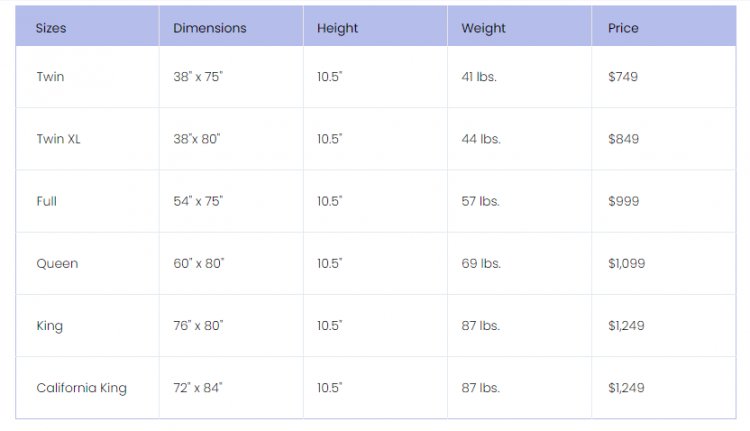
Trial, Warranty, and Shipping Policies
Availability
Layla mattresses are only sold online. Customers may purchase a mattress from the layla website or amazon.Com. Layla doesn’t operate any brick and mortar stores or sell their mattresses in mattress stores.
Layla ships their mattresses to locations in the u.S. And canada.
Shipping
Layla ships to the U.S. and Canada using standard shipping through FedEx Ground. They ship to the contiguous U.S. for free. People in Alaska and Hawaii must pay $125 for shipping. Those in Canada must pay $225.
Layla mattresses are shipped in a box. They have been compressed and rolled to fit in a box much smaller than the size of the mattress.
Since Layla manufactures mattresses on demand, customers can expect their mattress to arrive 4 to 8 business days after they’ve placed an order. Assembling the mattress takes 2 to 3 business days, and the delivery process takes 2 to 5 business days.
Customers must set up their own mattress upon its arrival. FedEx generally leaves the box on a front step or porch. Layla doesn’t offer any setup services at this time.
Sleep Trial
Layla offers a 120-night sleep trial that begins the date the mattress is purchased. The sleep trial comes with a required 14-night break-in period. After 14 nights and before 120 nights, customers may return their mattress free of charge.
Shipping charges are not included in refunds. Customers in the contiguous don’t pay shipping, so this policy doesn’t affect them. Customers in Hawaii, Alaska, and Canada, however, should be aware that if they return a Layla mattress, they will not have their shipping fees refunded.
Layla doesn’t sell returned mattresses. Instead of asking customers to ship back returns, the company generally coordinates to have the returned beds picked up by a charity for donation.
Customers may initiate a return by emailing Layla.

